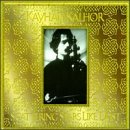| All Artists: Kayhan Kalhor Title: Scattering Stars Like Dust Members Wishing: 2 Total Copies: 0 Label: Trad. Crossroads Release Date: 6/9/1998 Genres: Folk, International Music, Pop Styles: Traditional Folk, Middle East, Iran, Arabic Number of Discs: 1 SwapaCD Credits: 1 UPC: 780702428820 |
Search - Kayhan Kalhor :: Scattering Stars Like Dust
 | Kayhan Kalhor Scattering Stars Like Dust Genres: Folk, International Music, Pop
|
Larger Image |
CD DetailsSimilar CDs |
CD ReviewsA perfect album dasmith@iei.net | U.S.A. | 05/24/1999 (5 out of 5 stars) "Kalhor is best known to U.S. audiences for his work as 1/3 of Ghazal, the group that fuses Hindustani and Persian music. On this release he focuses on his own tradition, the classical Persian tradition, updating it with somber Kurdish folk melodies and, of course, his own innovations on the kemancheh, or spiked fiddle. As with all austere, composition-based performances, the innovations here are extremely subtle and Kalhor maintains the mood of the piece over the entirety of the album. Pejman Hadadi, the percussionist, provides rolling cascades of sound in complex rythmic tandem with Kalhor's kemancheh. Hopefully Kalhor's solitary updating of Persian classical music will continue along with the fusion of Ghazal." "Seduction for Allah" Pharoah S. Wail | Inner Space | 08/04/2003 (4 out of 5 stars) "Some music is great for focusing intently on, and some is better for sort of background listening. This disc works on both levels. You can sit right in the focal point of your speakers and just hang on every note of this beautiful music, or you can just play it as you do other things. I almost always listen to this cd while using the "stadium" listen-mode on my receiver. It really makes me able to just (sonically) picture this music being blasted out of a loud-speaker in the tower of a mosque. That's one of the 2 mindsets in which this cd almost always puts me. Just echoing and reverberating down on we the people as a call to prayer. Kayhan is one of the first people I think of when I think of how the West views violins/fiddles. Kayhan is just a flat-out brilliant improvisor and an almost unsurpassed master of tone. When I listen to him and various other fiddler/violinists the world over, it just hurts my heart to think of how the Western "classical" world tends to think it's the best at everything, even though there is almost no one in that world who has the depth of soul and improvisational prowess of the master musicians of the East. It's been a very long time since I have listened to the first 2 Ghazal cds (I don't have the 3rd one) so there won't be any sort of comments on whether I prefer this or those, but this cd just never gets old. I've had it for a couple years now and it just always pulls me in. I tend to despise anything I perceive to be "romantic music". Not sure why, but Western "love songs" almost give me a need to vomit. While I don't consider this to be a disc of romantic music, there is something so ungodly sensual about it that I can't even listen to it without just wanting to caress a woman through a silk sheer inside a circle of candles or something. This cd is a toe-curler! Improvisation of the highest order." Most beautifull Kamancheh recordings in the recent years. dasmith@iei.net | 06/25/1999 (5 out of 5 stars) "Kayhan Kalhor is one of most accomplished Kamancheh players in the Iranian music industry. His latest CD reflects his abilities as a master of this instrument. A wonderfull CD to listen to and appreciate."
|

 Track Listings (3) - Disc #1
Track Listings (3) - Disc #1